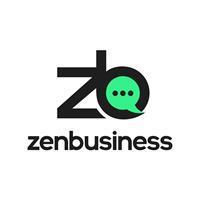-
Start Smart: How Founders Are Cutting Costs Without Cutting Corners
-
July 10, 2025
Launching a company often begins with the dual challenge of building something high-quality on a budget that feels more like a shoestring than a runway. The early days are romanticized—garage offices, ramen-fueled sprints, blurry lines between personal and business finances—but the reality is often a race to stretch every dollar without undermining the core vision. Avoiding shortcuts doesn’t mean spending freely; it means being intentional, clever, and willing to zig where others zag. As more founders grow wary of the old “move fast and break things” ethos, a new wave is choosing sustainability, precision, and long-game thinking instead.
Choose Tools That Scale With You
Early investments in software, platforms, and infrastructure often balloon into unnecessary overhead. Too many new founders pick tools designed for enterprise-level businesses, burning cash on bells and whistles that don’t matter yet. Instead, companies are looking toward modular platforms that grow with usage—tiered pricing models, flexible API-driven services, or open-source options with supportive communities. These tools offer the function startups need now, without forcing them to commit to an overbuilt system they’ll struggle to grow into later.
Build Legitimacy Without Bleeding Cash
Forming a legal entity is one of the first real expenses a new business faces, and while it may not break the bank, it sets the tone for how you manage costs early on. State filing fees will vary based on your state, so it’s smart to check the specific requirements where your business will operate. For founders who prefer a streamlined approach, online formation services offer customized registration packages that also include EIN filing and registered agent services. Choosing to start an LLC with ZenBusiness lets you handle it all in one place, keeping things compliant without adding unnecessary friction or overhead.
Co-Create Instead of Outsource
Rather than outsourcing entire chunks of product development or design, many startups are shifting toward a more collaborative build process. Founders are working closely with fractional teams—designers, engineers, marketers—who operate more like partners than vendors. This shared investment in the product’s outcome keeps quality high without the markup that comes with traditional agencies. It’s not about skimping on talent; it’s about reframing the relationship to prioritize aligned incentives over deliverables on a clock.
Barter, Trade, and Offer Equity
Cash may be king, but creativity is often the better currency in the earliest days. Founders are tapping into their networks to trade services—offering product features, early access, or marketing exposure in exchange for legal advice, UX audits, or development help. Where appropriate and with careful vetting, equity can also replace cash payments, creating long-term buy-in without burning short-term liquidity. These arrangements work best when structured with clarity and documented boundaries, but when done right, they open the door to talent and support that would otherwise be out of reach.
Delay the Polished Finish
Perfectionism is expensive. Many startups are ditching the need for flawless packaging, pristine office setups, or full-feature launches in favor of controlled, intentional imperfection. That doesn’t mean shipping junk or making customers do QA—it means soft launches, pilot programs, and MVPs that focus on delivering value, not glitz. When users feel like they’re part of shaping something, the experience becomes more intimate, and feedback more honest. Quality doesn’t always mean glossy; sometimes it means nimble, genuine, and focused on utility.
Use Constraints as Design Fuel
Constraints aren’t just limitations—they can sharpen instincts and force better choices. Founders who accept their financial limits often uncover unexpected pathways: building community instead of paying for reach, prioritizing depth over scale, choosing fewer features that work better instead of many that barely do. These constraints drive precision and intentionality, both of which end up creating stronger products and more loyal customers. It's not romanticizing hardship; it’s acknowledging that real ingenuity is born in the tension between vision and reality.
Avoid Imitation as a Default
There’s a temptation to mimic what’s worked for others, especially when budgets are tight and uncertainty is high. But copying another startup’s tech stack, marketing style, or growth tactics can lead to bloated systems and misaligned priorities. The smarter move is to question every assumption and challenge every “best practice.” Startups that carve their own playbook are more likely to stay lean and responsive—because their decisions are based on fit, not fashion. Doing things differently isn’t a rebellion; it’s just better alignment between vision, cost, and quality.
At the heart of this shift is a growing understanding that sustainability matters, not just for the planet but for businesses too. Reducing startup costs while holding onto quality isn’t about being cheap; it’s about being wise. Founders willing to be scrappy, honest, and intentional often end up with stronger products and deeper customer relationships. They may not make headlines for explosive overnight success, but they build companies that last—and that’s the kind of growth worth betting on.
Discover the community of Searcy, Arkansas with the Searcy Regional Chamber of Commerce and explore opportunities for living, working, and thriving in your natural fit!ZenBusiness
-
Sallie Clark Marketing Coordinator
- July 10, 2025
- (512) 765-4985
- Send Email
-
-
A Natural Fit.
.jpg)

